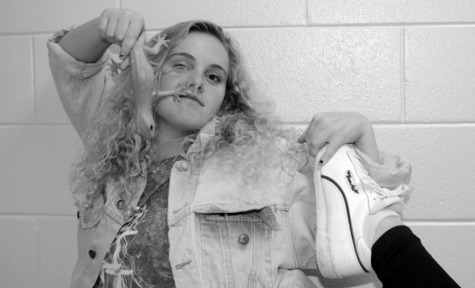Lack of diversity is troubling for the future of girls’ soccer
October 3, 2014
Sophomore Tosin Odumuye is one of the strongest players on the girls varsity soccer team, dominating defensively and starting nearly every game. As another member of the team, it’s refreshing to know that our program has a future because of extremely talented young players like her. Yet, as one of only four minority girls currently rostered on the varsity team, Odumuye explained that her experience would be, “Probably different [if she were white]. I feel like I’d just be better in general.”
Odumuye is not the only minority girl with this mindset when it comes to sports. Sauda Ibrahim, a junior Somali student who hopes to join the team in the future, also feels that her ethnicity has hindered her athletic success. “I would’ve improved [if I were white]. I would’ve been famous,” Ibrahim laughed.
The boys varsity soccer team at South has a racial makeup of more than 50% minority players, while the girls team has less than 25% minority players. The lack of diversity has been alienating and intimidating for many girls hoping to play. This could be the downfall of the program in a school where the minority population is continuing to grow and girls soccer is continuing to shrink.
A study published in the journal “Annals of Behavioral Medicine” reported that “black athletes are less likely to report self-perceived popularity than Whites.” The study went on to say that “youth choose sports as the most important criterion for male, not female, popularity.” This shows the sad truth that no matter how successful the athlete, if you’re a minority and female you probably won’t get the same confidence boost and social benefits from sports as others.
Odumuye explained that even small things like hairstyle can affect how comfortable she feels on a majority white team. “Thats why I straighten my hair. I dont like to feel that different. I like to put my hair in braids and you can’t do that unless its straight.”
Fitting in, being competitive, and having a healthy self-image is a constant balancing act for many minority girl players. Boys, on the other hand, emphasized that their team is welcoming and soccer oriented. “I just want you to play,” junior Miracle Adebanjo, a varsity Black British player, stated. “It’s important to remember your roots, but its not important when you’re playing. It doesn’t need to separate you. Everyone’s equal.”
The boys teams’ accepting attitude hasn’t necessarily spread to the stands. “It’s more of the white guy parents who [are] always the ones yelling rude comments like ‘this isn’t their [minority players’] sport.’” goalkeeper Tony Branca, a senior, stated.
Another boys varsity player, junior Zane Elfatairy, has also noticed this discrimination from white male parents. “I’ve heard them say ‘What are they doing here? They shouldn’t be here.’” Elfatairy attributes these outbursts to frustration surrounding soccer fees. “The wealthy are the white men who have paid the fees for their kids soccer expenses. Obviously there are a lot of scholarship kids around here and some parents might not like that people aren’t paying as much as they [white wealthy parents] are.”
Luckily, the boys team has found a way to build a strong and diverse squad even with parent push back: pick-up games. “Pick-up games are perfect, it’s where you go to play soccer and even if you mess up you just brush it off and become friends with the person there,” Adebanjo said.
Both Adebanjo and Elfatairy believed that pick-up games could be very beneficial to the girls teams’ atmosphere and lack of diversity. “You could outreach to people, ‘Hey come to this park at four for a pickup game!’ and do that to [reach] more people than you would usually,” Elfatairy suggested. “It’s just a way to connect to someone even if you’d never talk to them… [Even if] you wouldn’t interact with them, if you’re at a pickup game with them the story changes a lot.”





